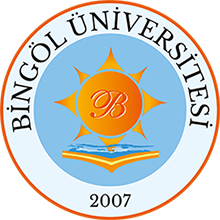Sağlık Çalışanlarının Rekreatif Faaliyetlere Katılımlarını Engelleyen Faktörler ve Mesleki Tükenmişlik Düzeylerinin İncelenmesi
Özet
ÖZET:
Bu araştırma, Bingöl İl Sağlık Müdürlüğüne bağlı merkez de görev yapan sağlık çalışanlarının rekreatif faaliyetlere katılımlarını engelleyen faktörler ve mesleki tükenmişlik düzeylerinin incelenmesi amacıyla yapılmıştır. Araştırmanın evrenini Bingöl İl Müdürlüğüne bağlı merkez hastanelerde görev yapan sağlık çalışanları oluşturmaktadır. Çalışmaya 117 kadın 142 erkek olmak üzere toplam 259 sağlık çalışanı gönüllü olarak katılmıştır. Araştırmamızda veri toplama aracı olarak anket yöntemi kullanılmıştır. Anket formu üç bölüm ve toplam 44 sorudan oluşmaktadır. Birinci bölümde demografik değişkenlerle ilgili 11 ifade yer almaktadır. İkinci bölümde, 18 ifadeden oluşan “Boş Zaman Engelleri Ölçeği”, üçüncü bölümde 15 ifadeden oluşan “Mesleki Tükenmişlik ve Toparlanma Ölçeği” kullanılmıştır. Ölçeklerin güvenilirlik analizleri Cronbach alfa güvenirlik katsayısı hesaplanarak yapılmıştır. Demografik bilgiler ve diğer grup sorulara ait fikir edinilmesini sağlamak amacıyla aritmetik ortalama, standart sapma, frekans ve yüzde dağılımları içeren tanımlayıcı istatistikler sunulmuştur. Sağlık çalışanlarının rekreatif faaliyetlere katılımlarını engelleyen faktörler ve mesleki tükenmişlik düzeylerini tespit etmek amacıyla korelasyon (Pearson) testi uygulanmıştır. Rekreatif faaliyetlere katılımları ve mesleki tükenmişlik düzeyleri alt boyutlarının bazı demografik değişkenlerle ilişkisini tespit etmek amacıyla ilk etapta çarpıklık ve basıklık (Skewness and Kurtosis) testlerine bakılmış olup test sonucuna göre normallik şartlarını sağlayan verilerin analizinde bağımsız ikili grupların karşılaştırılmasında Bağımsız Örneklem T (İndependent Sample T) testi ile normallik şartlarını sağlamayan verilerde ise Mann Whitney-U testleri uygulanmıştır. Ayrıca değişkenler arasındaki ilişkileri bütüncül biçimde sınamak için regresyon analizinden faydalanılmıştır. Sonuçlar %95 güven aralığında, anlamlılık p<0.05 düzeyinde değerlendirilmiştir. Verilerin değerlendirilmesinde IBM SPSS Statistics 22 paket programından faydalanılmıştır. Çalışmamızın sonuçlarına göre, rekreatif zaman engelleri ölçeğinden alınan cevaplara göre, yaş, medeni durum, eğitim durumu, mesleki görev süresi, çocuk sayısı, çalışma şekli, şehir değişkeni ve eş çalışma durumu değişkenlerinde; Yine çalışmamızın mesleki tükenmişlik ölçeğine verilen cevaplar sonucunda ise, gelir düzeyi, cinsiyet, şehir değişkeni ve eş çalışma durumlarında gruplar arasında istatiksel olarak anlamlı farklılığa rastlanılmıştır. ABSTRACT:
This research was conducted to examine the factors preventing the participation of health workers working in the centre of Bingöl Provincial Health Directorate in recreational activities and their occupational burnout levels. The population of the study consists of health care workers working in central hospitals affiliated to Bingöl Provincial Directorate. A total of 259 health workers, 117 women and 142 men, participated in the study voluntarily. In our research, questionnaire method was used as a data collection tool. The questionnaire consists of three sections and 44 questions in total. In the first section, there are 11 statements about demographic variables. In the second part, ‘Leisure Time Barriers Scale’ consisting of 18 statements and in the third part, ‘Occupational Burnout and Recovery Scale’ consisting of 15 statements were used. Reliability analyses of the scales were performed by calculating Cronbach's alpha reliability coefficient. Descriptive statistics including arithmetic mean, standard deviation, frequency and percentage distributions were presented to provide an idea about demographic information and other group questions. Correlation (Pearson) test was applied to determine the factors preventing the participation of health workers in recreational activities and their occupational burnout levels. In order to determine the relationship between their participation in recreational activities and the sub-dimensions of occupational burnout levels with some demographic variables, Skewness and Kurtosis tests were examined in the first place, and in the analysis of the data that met the normality conditions according to the test results, the Independent Sample T (Independent Sample T) test was applied in the comparison of independent paired groups and the One-Way Anova test was applied in multiple comparisons. In addition, regression analysis was used to test the relationships between variables in a holistic manner. The results were evaluated at 95% confidence interval and significance at p<0.05 level. Statistics package programme was used in the evaluation of the data. According to the results of our study, according to the answers received from the recreational time barriers scale, statistically significant differences were found between the groups in the variables of age, marital status, educational status, professional tenure, number of children, working style, city variable and spouse working status; Again, as a result of the answers given to the professional burnout scale of our study, statistically significant differences were found between the groups in income level, gender, city variable and spouse working status.
Koleksiyonlar

DSpace@BİNGÖL by Bingöl University Institutional Repository is licensed under a Creative Commons Attribution-NonCommercial-NoDerivs 4.0 Unported License..













